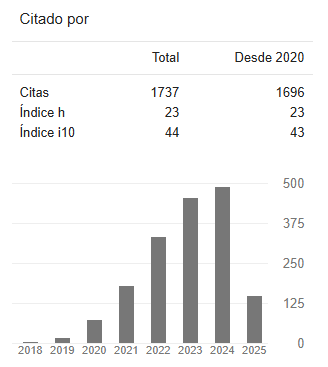Tejiendo redes entre género, interculturalidad y biodiversidad
DOI:
https://doi.org/10.29166/catedra.v1i1.765Palabras clave:
biodiversidad, diálogo de saberes, discriminación, equidad, género, interculturalidadResumen
Este artículo invita, a mirar al género y la interculturalidad en la complejidad de sus interacciones que ocurren en unos contextos eco ambiental en el que las relaciones de poder de unos colectivos sobre otros -de hombres sobre mujeres o blancos sobre indígenas y afrodescendientes- con la biodiversidad implican, a su vez, interrelaciones con graves consecuencias en términos de equidad. El género y la interculturalidad tienen un desarrollo conceptual de mucha data; no obstante, su evolución, más bien, ha sido en paralelo con poca articulación entre los dos, con abordajes fragmentados y parciales. Las personas por su género y la pertenencia a una etnia han sido objeto de discriminación, inequidad y exclusión y muchas veces separadas de sus medios de vida. En tal sentido, el propósito de este estudio es abrir un espacio de diálogo y encuentro desde un enfoque interdisciplinar en aras de entender cómo se entrecruzan, se dinamizan y se potencian en el uso, acceso y participación de los beneficios de la biodiversidad las poblaciones que habitan estos territorios. La generación de estos nuevos puentes pone el acento en una ecología de saberes, en la que el estado, la academia y las comunidades locales le apuesten a un manejo sustentable de la biodiversidad. La metodología es de carácter cualitativa, por cuanto se hace la confrontación permanente, en un proceso de diálogo intercultural que busca un cambio que armonice la convivencia entre los grupos comunitarios y la naturaleza.
Descargas
Citas
Benería, L. (1987). Gender, Development and Globalization: Economics as if All People. New York: Toutledge.
Braidotti, R. (2004). Mujeres, medio ambiente y desarrollo sustentable. Surgimiento del tema y diversas aproximaciones. En Vázquez García, V y Velázquez Gutiérrez, M,
compiladoras, 2004. Miradas al Futuro. Hacia la construcción de sociedades sostenibles con equidad de género. Centro Regional
CODAE, CODEPMOC, CODENPE, (2013). Agenda nacional para la igualdad de nacionalidades y pueblos (ANINP) 2013 – 2017. Quito.
Cuvi, M y Poats, S V. (2011). La interculturalidad en la gestión social de los ecosistemas andinos. Quito: ECOBONA, Serie Investigación y Sistematización No. 16. Programa Regional ECOBONA-INTERCOOPERATION. Quito.
FAO, (2011). El estado mundial de la agricultura y la alimentación. Disponible en: http://www.fao.org/3/a-i6030s.pdf.
Faúndez, A y Weinstein, M. (2012). Ampliando la Mirada: La integración de los enfoques de género, interculturalidad y derechos humanos. Santiago de Chile.
GIZ, (2013). Sistematización II Encuentro de interculturalidad, género y soberanía alimentaria.
Jara, C, (2013). Nuevo Paradigma Buen Vivir Rural. PDF. Disponible en: https://www.google.com/search?client=firefoxb&ei=0AseWpaqKIS6ggempoPoAg&q=Jara+buen+vivir+&oq=Jara+buen+vivir+&gs_l=
psy-ab.3..0i8i13i30k1.179844.186342.0.189784.10.10.0.0.0.0.231.1075.2-5.5.0....0...1c.1.64.psy-b..5.2.451...35i39k1.0.9HH6f0l8ELY&gfe_rd=cr&dcr=0 Lovera, S., (2010). Las mujeres alimentan el mundo. PDF.
Paulson, S. (2007). Avances y desafíos conceptuales en el campo de género y ambiente. Conferencia presentada en el Grupo de Discusión de Género y Ambiente, organizado por Randi Randi, Quito.
Paulson, S, (2009). Cuerpos sexuados en el paisaje. En Paulson, S, Poats, S y Arguello, M. editoras, 2009. Huellas de género en el mar, en el parque y en el páramo. Quito, EcoCiencia, Corporación Randi Randi y Abya Yala.
Paulson, S, (2009). Introducción. Nuevas huellas en el paisaje intelectual de género y ambiente en el Ecuador. En Paulson, S, Poats, S y Arguello, M, (Eds), Huellas de género en el mar, el parque y el páramo. Quito: EcoCiencia, Corporación Grupo Randi Randi y Abya Yala.
Pazmiño, A, (2008). Las mujeres indígenas de Latinoamérica en la agenda de desarrollo. UICN. Ecuador. Endogenous Development and Bio – cultural Diversity.
Rodríguez, E e Iturmendi, A, (2013). Igualdad de Género e Interculturalidad: Enfoques y estrategias para avanzar en el debate. Serie Atando cabos deshaciendo nudos. PNUD. PDF.
Sasvari, A. Aguilar, L., Khan, M. y Schmitt, F. (2010). Guía para la transversalización de género en las Estrategias Nacionales de Biodiversidad y Planes de Acción. Gland, Suiza: UICN. viii + 88.
Sen, A. (2000). Social Exclusion: concept, application and scrutiny', Social Development Papers, No.1, ADB.
Solís, C. (2012). Educación Ambiental para el desarrollo sostenible intercultural desde un enfoque de género. (Tesis Doctoral). Universidad de Sevilla., Sevilla, España.
UNESCO (2009). Informe Mundial. Invertir en la diversidad cultural y el diálogo intercultural. UNESCO.
Varea, S, (2006). Los poderes de yachacs y parteras kichwas en la Amazonía ecuatoriana. En Cuvi Sánchez, M, Poats V, S y Calderón, M., (editoras). Descorriendo velos en las Ciencias Sociales. Estudios sobre mujeres y ambiente en el Ecuador. Quito: EcoCiencia y Abya-Yala.
Vázquez - García, V y Velázquez - Gutiérrez, M, (comp.), (2004). Miradas al Futuro. Hacia la construcción de sociedades sostenibles con equidad de género. Centro Regional de Investigaciones Multidisciplinarias. Primera Edición, México. D.F.
Yuval-Davis, N, (2004). Género y nación. Lima: Flora Tristán.
Descargas
Publicado
Versiones
- 2020-09-03 (3)
- 2020-09-03 (2)
- 2018-09-26 (1)









